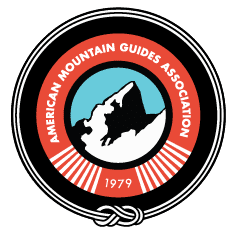


Backcountry Education
by Martin Volken
I never thought I would see the day. Backcountry skiing is actually popular. The quality of gear available to the person considering this great sport has increased dramatically and the selection is astounding. Ski areas are revamping their out-of-bounds policies and are trying to find a way to be a part of this trend.

Along with increased funding for the various avalanche forecast centers across the country, we’ve seen a dramatic increase in the popularity of avalanche safety courses and organizations such as American Institute for Avalanche Research and Education (AIARE.org) and The American Avalanche Institute (AAI) to name a couple are gaining notoriety. The tireless efforts of these organizations to get budding ski tourers (along with snowshoers and snowmobilers) into the backcountry safely cannot be overlooked. In fact, they are providing opportunities to the backcountry ski community that I never had growing up in Switzerland.
The systematic approach offered in the multi -level courses offered by AIARE and AAI can really advance your avalanche safety knowledge dramatically in a very short amount of time.
For many an aspiring backcountry skier, taking an avalanche course has now become the first logical step in the backcountry education process but, regrettably, it’s also, quite often, where the education stops. Let me explain.

Backcountry skiing is an application- based skill with many nuances. People are drawn to avalanche courses because they know how to ski and, of course, how to walk, and in their mind the missing link is understanding snow safety and avalanche hazard. Therefore, they take an Avalanche Safety Course. It’s an understandable notion but, unfortunately, it does consider the big picture of what is going on during a ski tour.
When I started my guide service about 15 years ago, we didn’t actually offer avalanche safety courses. We offered ski touring courses ranging in difficulty from beginner to expert – and we still do. When the opportunity to teach avalanche safety courses became available to mountain guides, most of us happily added them to our repertoire. In a very short time, the popularity of avalanche safety courses has outpaced the popularity of ski touring courses.
So, my point here is there are two trends; one that I am happy about, and one that I believe needs rethinking.
Trend number one is that, more than ever, people want to approach backcountry skiing in a cautious manner and are seeking education before venturing into the mountains. This is excellent.
The second trend, the one I believe deserves rethinking, is that these same skiers are almost exclusively going straight to level-one avalanche courses and ending their formal education right there. Again, it’s hard to complain about skiers seeking avalanche safety education, but it’s at the expense of recognizing the broader skillset that safe backcountry skiing requires. Upon asking our avalanche safety course participants about their personal course objectives, the overwhelming answer is that they want to make better and safer decisions in the backcountry. This is an excellent goal, but avalanche safety is only one of many important considerations when moving through backcountry terrain - an extremely important one but, nonetheless, just one consideration.
Because of the great equipment and increasing popularity of the sport, accessing the backcountry is easier than ever. People with strong downhill ski skills are able to put themselves into committing ski terrain without having much experience choosing terrain or traveling in the backcountry. And this is where the current trend in choosing avalanche education falls short. Being a safe and experienced backcountry skier requires more than strong downhill technique and an understanding of avalanche basics. There is a mountain sense, a familiarity with big mountain terrain, equipment, travel technique and decision making that only comes with experience and days on skis. Some skier’s are lucky to have trusted mentors showing them the ropes and instilling broader mountain travel skills. For the rest of us, the best way to broaden our safety and skills is to participate in a backcountry ski courses offered by a trusted guide service or even mountain club.
The stated objective of our ski touring courses is to get course participants to a point where they can choose, plan and execute a ski tour on their own. These courses are incredibly rounded introductions to the sport and are 100% movement and application based. They cover equipment, tour planning, time calculation, navigation, uphill skills, pacing, track setting, ski skills and much more along with companion rescue and safe movement in avalanche terrain. As you can imagine these courses are packed with practical information.
Depending on where you take your avalanche course, you may spend up to 40% of your course time indoors, which may be necessary to get introduced to the concepts of snow safety. But it also means that you are less likely to be introduced to many of the other ski touring skills at all. What you get in an avalanche course is a very well structured and systematic introduction to avalanche terrain and avalanche hazard recognition.

I have yet to meet a course participant who took an avalanche safety course or ski touring course who told me that it was a waste of his or her time. The question is this: does either of the courses prepare the course participant adequately to venture into the backcountry in a safe and self-sufficient manner? My honest answer is no. You end up choosing between two courses that if combined together could go from great to amazing. I know it sounds like I’m trying to sell you another course – ideally from my guide service. But my motivation comes from an honest place. I truly believe that Level 1 Avalanche Courses in the US do not prepare you for self-sufficient backcountry travel. It is also not their stated objective. An introductory avalanche course is supposed to deliver a well-structured introduction to avalanche terrain and hazard recognition. In order to go from this important baseline to becoming a self sufficient backcountry skier, you will have to develop other skills that are, well – taught in a ski touring course and the sum of the two course curriculums combined delivers amazing results for the backcountry skier.
So if at all possible, try to combine the foundational elements of an avalanche safety course with the components of a movement and application-based ski touring course. Don’t let one, or the other, be the only educational course you take in your journey to becoming a backcountry skier. Just take them both from a reputable source. This might be a guide service, a club, or a trusted mentor. Believe me – it’s worth your time and money.

"